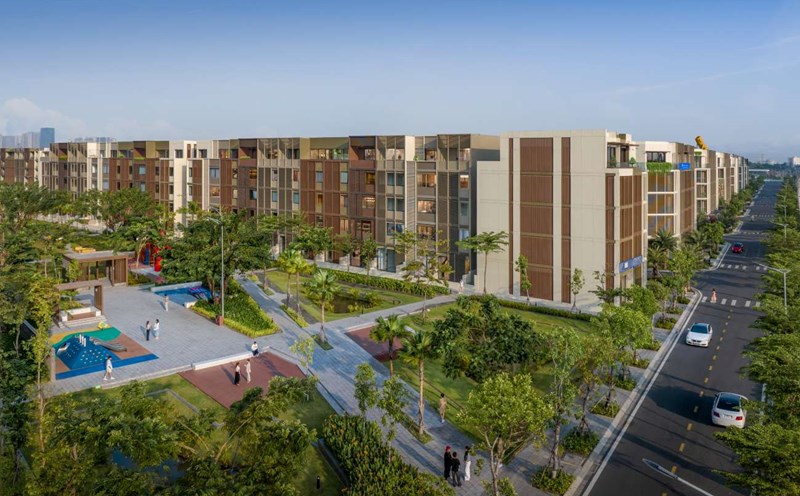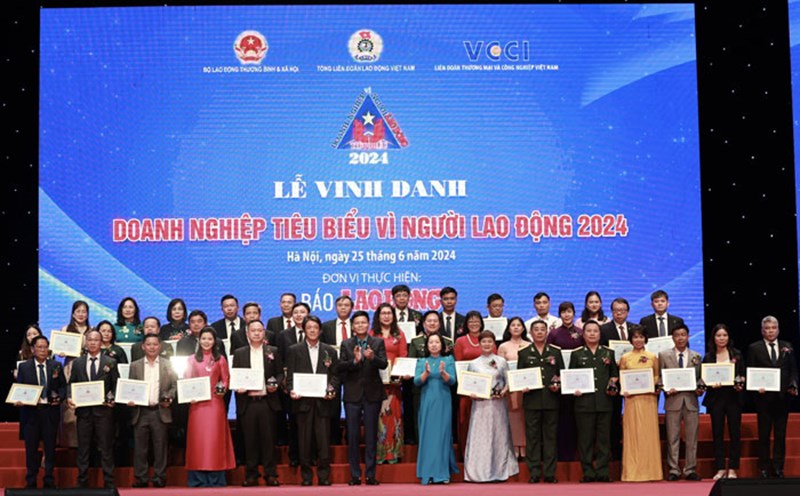From pristine suburban lands to golden lands in the heart of the city center, from the horizons in Ho Chi Minh City to new urban areas in Hanoi, private real estate companies not only build modern works but also create iconic architectural works. They not only redefine the concept of " Modern urban area" but also build an integrated lifestyle in line with development trends.
Previously, due to history, the face of Vietnam's urban areas mainly developed spontaneously and fragmentedly. Before the appearance of private real estate corporations, Vietnamese real estate was "defined" as a form of "pipe house", a model of subdivision and sale of land or a little more, a collection of monotonous high-rise blocks. Faced with mechanism bottlenecks, lack of service thinking, limited creativity and finance, state-owned real estate companies build new apartment blocks but the aesthetics are not high, lacking accompanying service facilities.
The appearance of private real estate developers has breathed new life, completely changing the quality and services of the real estate industry. They create closed urban areas - where residents can live, work, study, and play in the same integrated space, most typically Phu My Hung, Ecopark or The Global City of Masterise Group... They not only create a place to live, but also set standards and symbols for a new standard of living - where trees, lakes, schools, hospitals, and commercial centers are present at every foot.
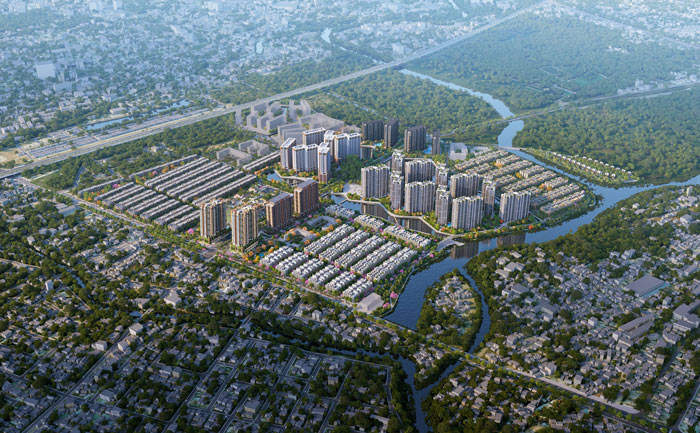
The Global City, an iconic urban area, the new center of Ho Chi Minh City, created by Masterise Group.
At the workshop "Breakthrough in institutional reform for the private economy to break through", Prof. Dr. Hoang Van Cuong assessed: "In the private real estate sector, it has risen to become a pillar even though the state is a pioneer."
Not stopping at large-scale urban areas, the private sector also enhances the appearance of big cities such as Hanoi, Ho Chi Minh City, Da Nang... with iconic works.
These branded ambassadors introduce to international visitors and friends a developed and dynamic Vietnam. These projects not only mark the boldness of vision but also affirm the construction capacity, finances, and project management capabilities of private real estate companies.
A special feature in the new generation of project developers is the desire to reach international standards. They cooperate with global brands such as Marriott, Ritz-Carlton, Foster + Partners... to bring the spirit of "branding" to real estate. Thanks to that, the quality of construction, architectural aesthetics and after-sales services has been significantly enhanced, contributing to raising the urban image and prosperity of Vietnam on the world map.

International mark at Grand Marina, Saigon - The world's largest Marriott & JW Marriott brand apartment complex.
In the development flow of the country, it can be affirmed that the private sector - especially real estate businesses - has proven that when given the opportunity, they promote their advantages and creativity not only "build" buildings, but also "build" modern, civilized urban dreams with the desire to integrate.
Infrastructure bottlenecks and breakthrough bottlenecks
At a conference organized by Dragon Capital in mid-July, Dr. Le Anh Tuan - Strategy Director assessed that a bottleneck with the Vietnamese economy is the unsynchronized infrastructure, causing logistics costs at 18%.
In the region, this figure is only lower than Indonesia - a country with many islands and significantly higher than other economies in the region such as Japan (8%), Singapore (8%), South Korea (9-10%), Malaysia (13%), Thailand (13.9%), China (14.4%)... This significantly affects national competitiveness.
Dragon Capital experts cited that large projects such as the Ho Chi Minh City metro line No. 1 have taken decades to build, accept, and trial operation before they can be exploited. Meanwhile, private real estate corporations are ready to participate in projects of double the scale with an implementation period of 2-3 years.
Dr. Le Anh Tuan expects the participation of the private sector in the infrastructure sector in the coming time to accelerate the implementation of important projects, reduce logistics costs and create breakthrough opportunities for the Vietnamese economy.
Aviation is the means of transport with the most strict standards on technical safety. The runway at Tan Son Nhat airport took four years to repair cracks that threatened aviation safety. Specifically, in 2016, the management unit proposed to invest in repairing the 07L/25R runway, but it was not implemented until 2020. At the same time, Tan Son Nhat International Airport is overloaded, Terminal T3 has had an investment policy since 2018, but construction will not start until the end of 2022. General reasons still revolve around mechanism bottlenecks: Investment projects from budget capital need approval mechanisms, have coordination between ministries and branches, and have to go through many process and procedures, causing actual implementation speed to be delayed.
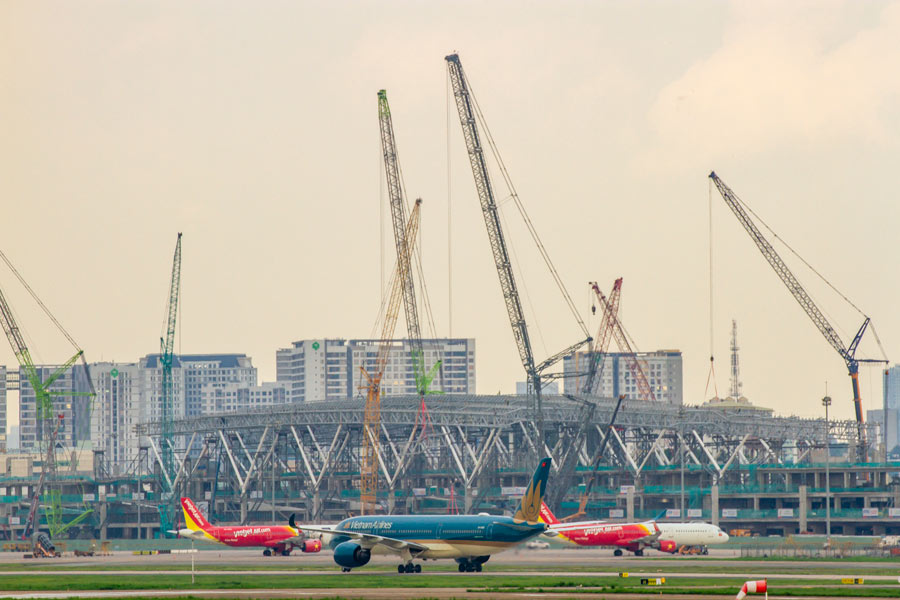
Investment projects from budget capital need an approval mechanism, there is coordination between ministries and branches, many processes and procedures, causing actual implementation speed to be delayed.
Private corporations have advantages in flexibility, service thinking, decisiveness and the ability to mobilize financial resources outside the budget. If the public-private partnership (PPP) mechanism is operated transparently, it will be an effective solution to remove bottlenecks that slow down the development of important infrastructure such as urban railway projects, airports, North-South high-speed trains, etc. The spirit of Resolution No. 68-NQ/TW breathes a new breeze to create a faster, faster driving force for infrastructure projects and the private economic sector may be the solution.
From Changi, Dao Vien and Incheon... looking at Vietnam's infrastructure
Changi International Airport (Singapore) is one of the busiest international airports in Southeast Asia. For many consecutive years, Changi has been considered one of the world's best airports in terms of service quality, customer experience and effective operation. The highlight in the airport is Jewel Changi, a project with many symbols: the world's tallest indoor waterfall, an artificial tropical forest, a classy shopping - culinary - entertainment space and a tourist destination not to be missed when coming to the Lion Island.
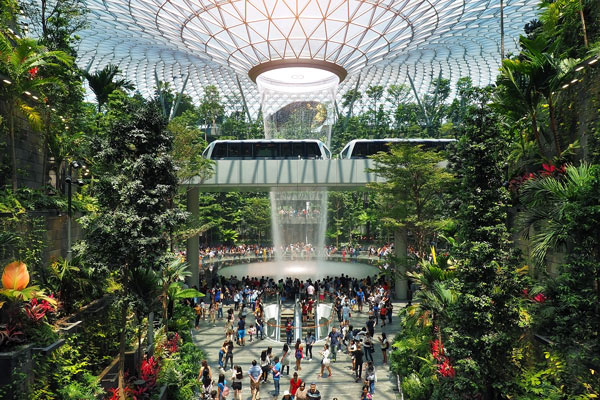
Rainvortex, a 40m high indoor waterfall located inside Jewal Changi Airport in Singapore.
The project is developed by a joint venture between Changi Airport Group and a private real estate group. The smooth coordination between the state and the private sector in planning, investing and operating infrastructure creates a new thinking about airports that do not limit their function as pick-up and drop-off points but as service and experience centers. This is a clear demonstration that when the private sector participates in the operation and exploitation of public infrastructure, with a vision and service thinking, quality and efficiency will be improved.
Both Korea and Taiwan (China) have similar models of airport and logistics infrastructure development, where the state plays a leading strategic role, private enterprises participate deeply in the design, construction, operation and exploitation of services. For example, Incheon Airport (Korea) - once the airport with the highest retail revenue in the world, surpassing Changi - is operated by Incheon International Airport Corporation (IIAC), a state-owned company but operating as an independent enterprise under a commercial mechanism. In Taiwan (China), phase 3 of Dao Vien International Airport (taoyuan International Airport) under construction with an investment capital of 2.3 billion USD, according to the PPP model, many service utilities have the participation of the private sector.
At the workshop "Breakthrough in institutional reform for the private economy to break through" on key infrastructure projects with the participation of the private sector, Dr. Can Van Luc - Chief Economist of BIDV Bank commented on the spirit of Resolution 68, without distinguishing between private enterprises and state-owned enterprises, the participation of ethnic enterprises and large private enterprises in infrastructure projects must be viewed based on the interests of the nation. Any large enterprise that meets four criteria: technology and engineering, financial planning, operations management, and risk control can participate, said Dr. Can Van Luc.
Airport infrastructure is the face of a country - where tourists, investors and the world first come into contact when coming to Vietnam. Developed countries all have a common formula for infrastructure development: combining state strategic control with the flexible implementation, commercialization and operation capacity of the private sector. This is a model worth considering when developing airports, seaports, and logistics in a modern, efficient, and sustainable direction - especially when the public budget is under great pressure from the goals of educational security and national defense.
In Vietnam, the participation of the private sector, typically representative businesses such as Masterise Group in the infrastructure sector, is a positive signal - not only because they share the burden of the public budget, but also because they carry the spirit of innovation, market acumen and determination to make breakthroughs.
If given an appropriate mechanism, with a pioneering spirit and willingness to undertake the national mission, Vietnamese private enterprises can completely become a strategic driving force to help Vietnam narrow infrastructure gaps, improve national competitiveness and enter a new era of national development.

